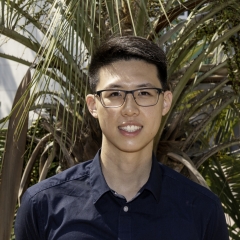Chemical Engineering Seminar Series by graduate students and postdocs
Surfactant self-assembly in solution formulations plays an important role in numerous biological and industrial applications ranging from detergents to oil-recovery. The morphologies of these self-assembled structures are major determinants for functionality and are controllable via a multivariate design space (temperature, composition, chemistry, and solution conditions, etc.). Thus, to accelerate
product design and discovery of new surfactant chemistries, improved methods for predictive computational modeling are needed for efficiently sweeping the expansive design space and studying the solution phase self-assembly behavior of surfactants. Conventional computational chemistry techniques for modeling surfactants include all-atom (AA) and coarse-grain (CG) molecular dynamics (MD). However, these particle-based methods become prohibitively expensive at the length and time scales that characterize the equilibration of surfactant micelles and mesophases. An alternative approach to particle-based simulations is to employ an equilibrium statistical field theory representation, that is particularly efficient for simulating large simulations and rigorously determining equilibrium phase behavior. A practical limitation to field theories, though, is their reliance on mesoscale phenomenological parameters that often need to be determined by
experiments. To overcome these individual limitations, we propose to employ a novel multiscale methodology that uses small-scale AA simulations to parameterize statistical field theory models via a bottom-up relative entropy coarse-graining. Through this approach, a molecularly informed statistical field theory can be built to make completely de novo predictions of surfactant phase behavior in the
absence of any experimental input. In this presentation, I will demonstrate the process for establishing the multiscale workflow for C12E5, a common nonionic surfactant, and show how I aim to validate the resulting computational model.
